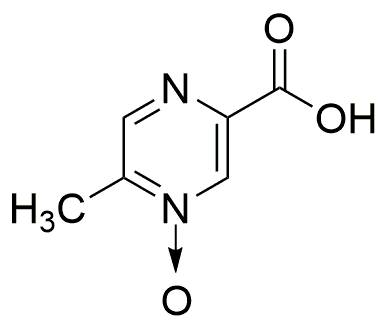Acipimox is widely utilized in research focused on:
- Cholesterol Management: Used in clinical settings to help lower cholesterol levels, particularly in patients with hyperlipidemia, offering an alternative to traditional statins.
- Diabetes Research: Investigated for its potential benefits in improving insulin sensitivity, making it a valuable compound in diabetes studies.
- Cardiovascular Health: Explored for its role in reducing cardiovascular risks associated with high lipid levels, contributing to heart health initiatives.
- Pharmaceutical Development: Serves as a reference compound in the development of new lipid-lowering agents, aiding researchers in creating more effective medications.
- Clinical Trials: Frequently used in trials to assess its efficacy and safety, providing critical data for healthcare professionals and researchers.
Informations générales
Propriétés
Sécurité et réglementation
Applications
Acipimox is widely utilized in research focused on:
- Cholesterol Management: Used in clinical settings to help lower cholesterol levels, particularly in patients with hyperlipidemia, offering an alternative to traditional statins.
- Diabetes Research: Investigated for its potential benefits in improving insulin sensitivity, making it a valuable compound in diabetes studies.
- Cardiovascular Health: Explored for its role in reducing cardiovascular risks associated with high lipid levels, contributing to heart health initiatives.
- Pharmaceutical Development: Serves as a reference compound in the development of new lipid-lowering agents, aiding researchers in creating more effective medications.
- Clinical Trials: Frequently used in trials to assess its efficacy and safety, providing critical data for healthcare professionals and researchers.
Documents
Fiches de données de sécurité (FDS)
La FDS fournit des informations de sécurité complètes sur la manipulation, le stockage et l’élimination du produit.
Spécifications du produit (PS)
Le PS fournit une description complète des propriétés du produit, notamment sa composition chimique, son état physique, sa pureté et les exigences de stockage. Il détaille également les plages de qualité acceptables et les applications prévues du produit.
Certificats d'analyse (COA)
Recherchez des certificats d'analyse (COA) en saisissant le numéro de lot du produit. Les numéros de lot et de lot se trouvent sur l'étiquette d'un produit, après les mots « Lot » ou « Lot de fabrication ».
Numéro de catalogue
Numéro de lot/série
Certificats d'origine (COO)
Ce certificat d'exploitation confirme le pays dans lequel le produit a été fabriqué, et détaille également les matériaux et composants utilisés et s'il est issu de sources naturelles, synthétiques ou autres sources spécifiques. Ce certificat peut être requis pour les douanes, le commerce et la conformité réglementaire.
Numéro de catalogue
Numéro de lot/série
Fiches de données de sécurité (FDS)
La FDS fournit des informations de sécurité complètes sur la manipulation, le stockage et l’élimination du produit.
DownloadSpécifications du produit (PS)
Le PS fournit une description complète des propriétés du produit, notamment sa composition chimique, son état physique, sa pureté et les exigences de stockage. Il détaille également les plages de qualité acceptables et les applications prévues du produit.
DownloadCertificats d'analyse (COA)
Recherchez des certificats d'analyse (COA) en saisissant le numéro de lot du produit. Les numéros de lot et de lot se trouvent sur l'étiquette d'un produit, après les mots « Lot » ou « Lot de fabrication ».
Numéro de catalogue
Numéro de lot/série
Certificats d'origine (COO)
Ce certificat d'exploitation confirme le pays dans lequel le produit a été fabriqué, et détaille également les matériaux et composants utilisés et s'il est issu de sources naturelles, synthétiques ou autres sources spécifiques. Ce certificat peut être requis pour les douanes, le commerce et la conformité réglementaire.


